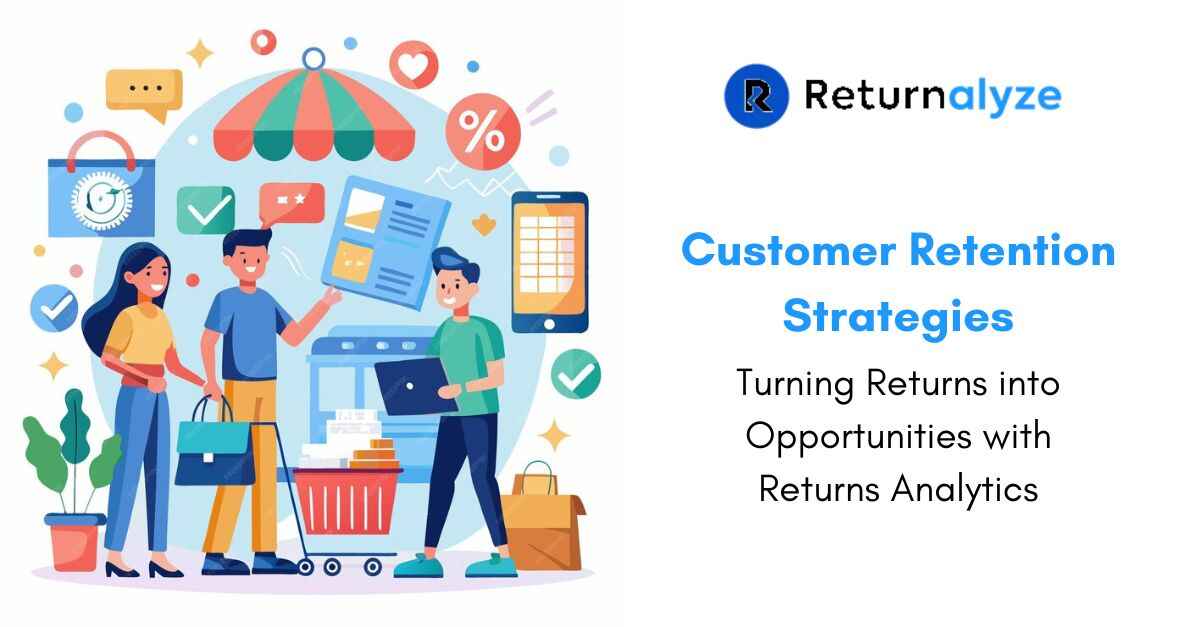


How to transform returns into valuable opportunities with effective returns analytics. Learn top customer retention strategies to improve loyalty.
In the fast-paced world of eCommerce, managing product returns is often seen as a burden. However, with the right strategies, returns can be leveraged as a powerful tool for improving customer retention. Returns analytics allows businesses to uncover valuable insights and transform challenges into opportunities for growth.
This article explores customer retention strategies focused on transforming returns into a competitive advantage, utilizing ecommerce returns analytics.
Customer retention is a key factor in the long-term success of any online business. Acquiring a new customer is typically much more expensive than retaining an existing one. A retained customer is also more likely to make repeat purchases, spend more on future orders, and refer others. Effective customer retention strategies not only drive profitability but also create a loyal customer base that advocates for your brand.
Retail returns analytics involves collecting and analyzing data from returned products to identify patterns, trends, and root causes. By understanding why products are returned, businesses can take steps to minimize returns, improve customer satisfaction, and ultimately enhance retention.
Returns data can reveal issues with product quality, sizing discrepancies, inaccurate descriptions, or even customer expectations. By addressing these pain points, businesses can provide a better overall customer experience and reduce the likelihood of future returns.
One of the primary reasons customers return items is that the product they receive doesn’t meet their expectations. This can often be attributed to inaccurate or incomplete product descriptions. Using product returns analytics, businesses can identify common reasons for returns related to product expectations and improve descriptions and images accordingly. Providing more detailed, accurate information will reduce the gap between customer expectations and reality.
For apparel brands, sizing issues are a frequent cause of returns. Returns analytics can help identify patterns in size-related returns, enabling businesses to refine their sizing charts and provide better guidance to customers. Additionally, implementing virtual fitting tools or size recommendation engines can further reduce size-related returns and improve customer satisfaction.
A smooth return process can actually improve customer loyalty. Providing easy returns, clear instructions, and responsive customer service shows that your business values customer satisfaction. Returns analytics can highlight areas where the return process can be optimized, allowing businesses to streamline operations and reduce friction for customers. A hassle-free return process will leave customers with a positive impression, making them more likely to shop again.
Rather than offering only refunds, businesses can encourage customers to exchange items instead. By using returns analytics, companies can understand which products are commonly exchanged and why. Offering incentives, such as discounts on the next purchase for exchanges, can encourage customers to stay engaged with the brand, rather than abandoning it after a return.
Not all returns are equal, and certain customers may be more prone to returning items. Using returns analytics, businesses can identify repeat returners and offer targeted strategies to reduce returns from these customers. This might include personalized size recommendations, early access to product samples, or other tailored interventions to minimize future returns and enhance their shopping experience.
Returns analytics provide valuable feedback on product performance. By analyzing return reasons and trends, businesses can gather insights that feed into product development and improvement. This customer-driven data ensures that future iterations of the product better meet customer expectations, reducing return rates and improving overall satisfaction.
Technology plays a crucial role in analyzing and interpreting returns data. Advanced analytics tools powered by artificial intelligence (AI) and machine learning (ML) can help automate the process of identifying patterns and making recommendations based on return trends. By integrating these tools with eCommerce platforms and customer relationship management (CRM) systems, businesses can access real-time insights and make data-driven decisions to optimize their returns process.
Returns are an inevitable part of running an eCommerce business, but they don’t have to be a liability. By using returns analytics to gain deeper insights into customer behavior, businesses can transform returns into opportunities to improve customer satisfaction and retention.
From refining product descriptions and sizing accuracy to enhancing customer service and offering exchange incentives, these strategies help create a more seamless shopping experience, turning one-time customers into loyal brand advocates.
